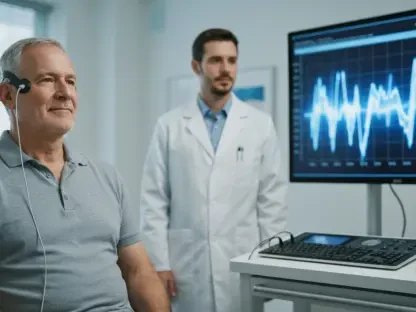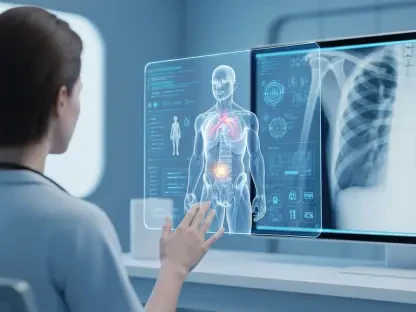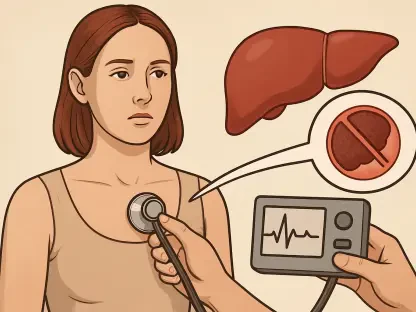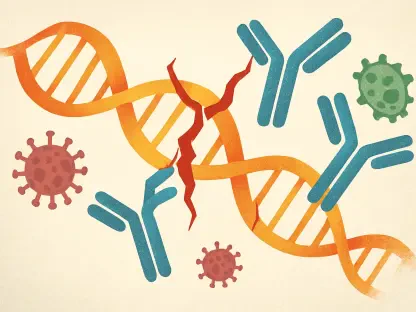Depression is a pervasive mental health issue, affecting approximately 18 million Americans each year, with nearly 30% of the population experiencing it at some point in their lives. Despite guidelines recommending universal depression screening in primary care, the actual screening rates are exceptionally low, with fewer than 4% of patients being screened. Even when screening is conducted, fewer than 50% of eligible patients get tested, highlighting a significant challenge in the current system.
Potential of AI and ML in Depression Screening
Artificial intelligence (AI) and machine learning (ML) present new opportunities to enhance depression screening rates without imposing additional administrative burdens on healthcare providers. One innovative tool specifically analyzes voice biomarkers—distinct speech patterns such as stuttering, hesitations, longer pauses, and slower speech—that could indicate depression. The use of this technology provides a non-invasive, objective, and automated method of screening, making it particularly suitable for virtual healthcare settings and early detection of at-risk individuals.
Study Overview
Researchers enrolled 14,898 adults from the U.S. and Canada through social media, with a particular focus on recruiting men and older adults to ensure diversity. Participants were asked to complete a standard depression questionnaire and provide at least 25 seconds of speech recorded through their phones or computers. These recordings were then processed for audio clarity and consistency before being analyzed by the ML model.
Model Evaluation and Findings
The machine learning model analyzed the voice recordings to detect moderate to severe depression. Participants were classified into three categories based on the model’s analysis: likely to have depression, no signs of depression, and requiring further evaluation if results were unclear. The model’s predictions were then compared with the participants’ actual questionnaire results. Voice recordings from 14,898 participants were divided into training (10,442) and validation (4,456) groups. The average length of speech samples was about 58 seconds, and depression scores ranged from 0 to 27, with a median of 9.
Sensitivity and Specificity
The machine learning model demonstrated a sensitivity of 71.3% (ability to detect depression) and a specificity of 73.5% (ability to rule out depression), with about 20% of cases classified as uncertain. The model’s accuracy varied across demographic groups. For instance, Hispanic/Latine and Black/African American participants had the highest sensitivity (80.3% and 72.4%, respectively), while Asian/Pacific Islander and Black/African American groups had the highest specificity (77.5% and 75.9%, respectively). Women exhibited higher sensitivity (74%) but lower specificity (68.9%), while men showed lower sensitivity (59.3%) but higher specificity (83.9%). Younger participants under 60 had more consistent results compared to older participants, whose sensitivity was 63.4% and specificity was 86.8%.
Trends and Limitations
The study revealed important trends and limitations. Adjusting the model to balance false negatives and false positives based on clinical needs remains crucial. The lower performance for men could be attributed to their underrepresentation in the training data and variations in depression symptoms. Age-related voice changes likely influenced the model’s performance for older adults. Although the study included participants from both the U.S. and Canada, further research is needed to explore how comorbid conditions impact voice biomarkers and to refine the model for better accuracy across various populations.
Future Implications
The research suggested that ML-based voice analysis holds significant promise for universal depression screening, offering a more accessible and efficient method for early detection. Further studies are required to address the variations in accuracy across demographics and to minimize diagnostic bias. As the technology continues to be refined, it could greatly enhance mental health care by facilitating earlier and more objective identification of depression.
Conclusion
Depression is a widespread mental health concern, affecting about 18 million Americans each year. Over their lifetime, nearly 30% of individuals will experience depression. Despite the severity and prevalence of this condition, the implementation of universal depression screening in primary care is sorely lacking. Current guidelines strongly advocate for widespread screening, yet the reality is starkly different. Shockingly, fewer than 4% of patients in primary care settings are actually screened for depression. Furthermore, even when screenings are performed, less than half of the patients who are eligible for testing receive it. This presents a significant gap and ultimately highlights the shortcomings and challenges within our current healthcare system, which fails to address the needs of those suffering from depression effectively. The low screening rates and follow-through indicate a pressing need for improvements in mental health care practices, ensuring that more individuals receive the necessary evaluation and subsequent treatment to manage this debilitating condition.









